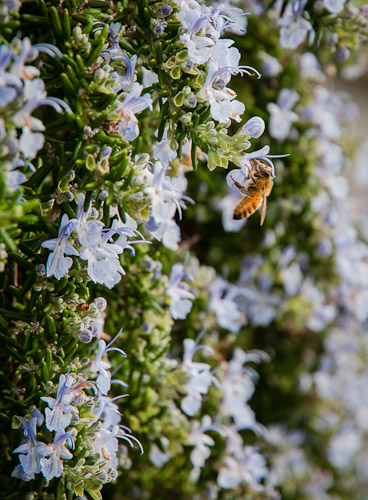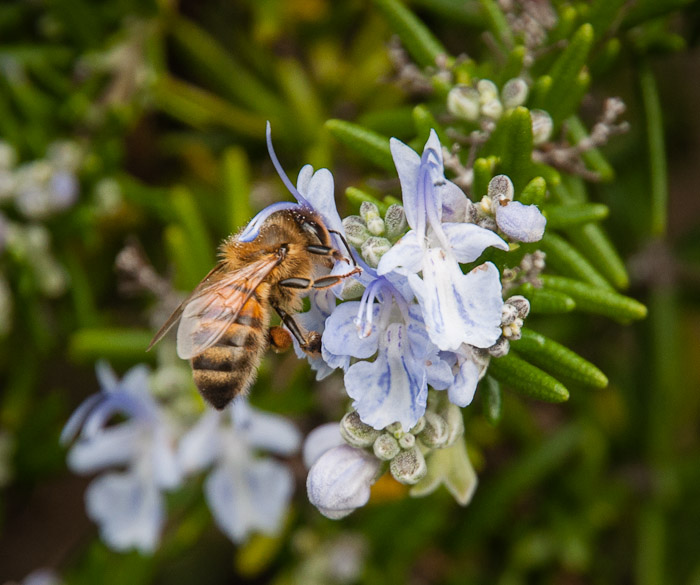A honeybee - seen on a grey winters day foraging for nectar and pollen from the flowers of a trailing rosemary.

I was delighted to see her, but sad that she was on her own. Only a few years ago, this plant would be abuzz with bees - but that is not the case any longer. These little insects are very precious indeed - even more so now because their numbers are much reduced worldwide. Disease, parasites, loss of diversity of plants and thus their food sources, pollution, pesticides, maybe even electromagnetic disturbance - there are lots of factors that could cause their death by damaging the functioning of their bodies and their hives - they live complex lives, with great navigation abilities and social organisation, and these can be disrupted in unintended ways. But we rely on these little hard-working creatures for so much. It is not just about their honey which we enjoy as a food and use for its medicinal qualities, but it is also because they are so crucial to the pollination and therefore production of food to be eaten and seed to be used to grow further crops.
When I was young, walking barefoot on the lawn included the risk of disturbing a bee and being stung. How quickly things can change! Instead of regarding a bee as a source of possible danger, I now see the bee as being beseiged and needing our help. So it's a great pleasure to provide them with fodder - plant lots of flowering plants for the bees!

The visiting honeybee (Apis mellifera), perched on the pale blue flowers of trailing rosemary (Rosemarinus officinalis 'Prostratus'). Small grains of pollen are scattered on her head and thorax, her head deep in the flower and capped by overhanging stamens - illustrating the transfer of pollen from the stamens onto the bee's body. By this means the pollen will be carried to another flower, assisting pollination.